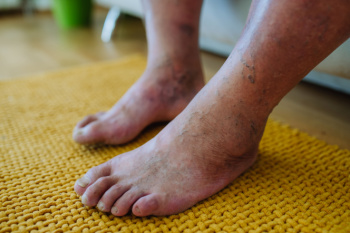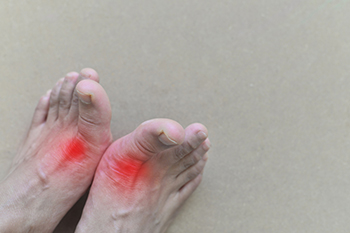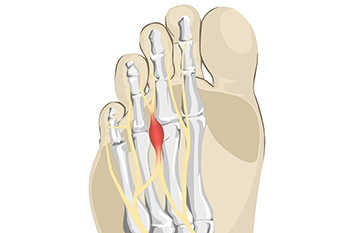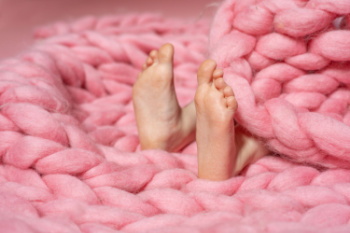Connect With Us
Blog
Items filtered by date: July 2024
Recognizing Serious Foot Problems Related to Diabetes

Foot problems related to diabetes can escalate quickly if not promptly addressed. Signs of serious issues include persistent numbness or tingling in the feet that could indicate nerve damage, known as neuropathy. Skin changes such as dryness, cracking, or peeling, particularly when accompanied by slow-healing sores or wounds, are concerning, as diabetes impairs circulation and wound healing. Swelling or redness surrounding a foot ulcer may indicate infection, a serious complication requiring immediate medical attention. Changes in foot shape, such as hammertoes or bunions, can also occur due to nerve damage and altered mechanics. Any sudden change in foot temperature or color warrants evaluation, as these can signal compromised blood flow. Regular foot exams by a podiatrist and diligent foot care routines are vital for managing diabetes and preventing serious foot complications. If you have foot problems related to diabetes, it is strongly suggested that you are under the care of this a podiatrist who can help you to manage this condition.
Diabetic foot care is important in preventing foot ailments such as ulcers. If you are suffering from diabetes or have any other concerns about your feet, contact Edward Orman, DPM from Honeygo Podiatry. Our doctor can provide the care you need to keep you pain-free and on your feet.
Diabetic Foot Care
Diabetes affects millions of people every year. The condition can damage blood vessels in many parts of the body, especially the feet. Because of this, taking care of your feet is essential if you have diabetes, and having a podiatrist help monitor your foot health is highly recommended.
The Importance of Caring for Your Feet
- Routinely inspect your feet for bruises or sores.
- Wear socks that fit your feet comfortably.
- Wear comfortable shoes that provide adequate support.
Patients with diabetes should have their doctor monitor their blood levels, as blood sugar levels play such a huge role in diabetic care. Monitoring these levels on a regular basis is highly advised.
It is always best to inform your healthcare professional of any concerns you may have regarding your feet, especially for diabetic patients. Early treatment and routine foot examinations are keys to maintaining proper health, especially because severe complications can arise if proper treatment is not applied.
If you have any questions please feel free to contact our offices located in Perry Hall, and Fallston, MD . We offer the newest diagnostic and treatment technologies for all your foot and ankle needs.
Footwear and Its Impact on Gout Patients
 Gout, an inflammatory arthritic condition caused by the crystallization of uric acid in joints, often results in severe pain and swelling in the big toe. Recent research underscores the significant impact that footwear choices can have on individuals suffering from gout. Findings show that wearing improper footwear, such as sandals, flip-flops, and slippers, can lead to heightened foot pain, impairment, and disability. Notably, poor shoes often lacked proper cushioning, support, and stability, contributing to increased discomfort and functional impairment. In addition, shoes that were 12 months or older and showed excessive wear patterns are factors. For that reason, it is essential for gout sufferers to carefully choose footwear that offers ample cushioning, proper support, and stability to alleviate foot pain and improve function. A podiatrist can diagnose gout, prescribe medication, and offer advice on selecting the right shoes to manage gout symptoms. If you are suffering from the flare-ups of gout, it is suggested that you schedule an appointment with a podiatrist for an exam, diagnosis, and treatment options.
Gout, an inflammatory arthritic condition caused by the crystallization of uric acid in joints, often results in severe pain and swelling in the big toe. Recent research underscores the significant impact that footwear choices can have on individuals suffering from gout. Findings show that wearing improper footwear, such as sandals, flip-flops, and slippers, can lead to heightened foot pain, impairment, and disability. Notably, poor shoes often lacked proper cushioning, support, and stability, contributing to increased discomfort and functional impairment. In addition, shoes that were 12 months or older and showed excessive wear patterns are factors. For that reason, it is essential for gout sufferers to carefully choose footwear that offers ample cushioning, proper support, and stability to alleviate foot pain and improve function. A podiatrist can diagnose gout, prescribe medication, and offer advice on selecting the right shoes to manage gout symptoms. If you are suffering from the flare-ups of gout, it is suggested that you schedule an appointment with a podiatrist for an exam, diagnosis, and treatment options.
Gout is a painful condition that can be treated. If you are seeking treatment, contact Edward Orman, DPM from Honeygo Podiatry. Our doctor will treat your foot and ankle needs.
What Is Gout?
Gout is a form of arthritis that is characterized by sudden, severe attacks of pain, redness, and tenderness in the joints. The condition usually affects the joint at the base of the big toe. A gout attack can occur at any random time, such as the middle of the night while you are asleep.
Symptoms
- Intense Joint Pain - Usually around the large joint of your big toe, and it most severe within the first four to twelve hours
- Lingering Discomfort - Joint discomfort may last from a few days to a few weeks
- Inflammation and Redness -Affected joints may become swollen, tender, warm and red
- Limited Range of Motion - May experience a decrease in joint mobility
Risk Factors
- Genetics - If family members have gout, you’re more likely to have it
- Medications - Diuretic medications can raise uric acid levels
- Gender/Age - Gout is more common in men until the age of 60. It is believed that estrogen protects women until that point
- Diet - Eating red meat and shellfish increases your risk
- Alcohol - Having more than two alcoholic drinks per day increases your risk
- Obesity - Obese people are at a higher risk for gout
Prior to visiting your podiatrist to receive treatment for gout, there are a few things you should do beforehand. If you have gout you should write down your symptoms--including when they started and how often you experience them, important medical information you may have, and any questions you may have. Writing down these three things will help your podiatrist in assessing your specific situation so that he or she may provide the best route of treatment for you.
If you have any questions, please feel free to contact our offices located in Perry Hall, and Fallston, MD . We offer the newest diagnostic and treatment technologies for all your foot care needs.
Definition and Symptoms of Morton’s Neuroma

Morton's neuroma is a painful condition affecting the ball of the foot, commonly between the third and fourth toes. It occurs when the tissue surrounding one of the nerves leading to the toes thickens, causing sharp, burning pain in the ball of the foot. Symptoms often include a sensation of standing on a pebble, tingling, or numbness in the toes. The pain may worsen with activities like walking or wearing tight shoes. Patients often describe a feeling of something being caught in the shoe or a persistent discomfort in the forefoot. Identifying and addressing these symptoms early can help manage the condition and prevent further complications. If you are experiencing any of the above sensations, it is suggested that you confer with a podiatrist who can diagnose and treat Morton’s neuroma.
Morton’s neuroma is a very uncomfortable condition to live with. If you think you have Morton’s neuroma, contact Edward Orman, DPM of Honeygo Podiatry. Our doctor will attend to all of your foot care needs and answer any of your related questions.
Morton’s Neuroma
Morton's neuroma is a painful foot condition that commonly affects the areas between the second and third or third and fourth toe, although other areas of the foot are also susceptible. Morton’s neuroma is caused by an inflamed nerve in the foot that is being squeezed and aggravated by surrounding bones.
What Increases the Chances of Having Morton’s Neuroma?
- Ill-fitting high heels or shoes that add pressure to the toe or foot
- Jogging, running or any sport that involves constant impact to the foot
- Flat feet, bunions, and any other foot deformities
Morton’s neuroma is a very treatable condition. Orthotics and shoe inserts can often be used to alleviate the pain on the forefront of the feet. In more severe cases, corticosteroids can also be prescribed. In order to figure out the best treatment for your neuroma, it’s recommended to seek the care of a podiatrist who can diagnose your condition and provide different treatment options.
If you have any questions, please feel free to contact our offices located in Perry Hall, and Fallston, MD . We offer the newest diagnostic and treatment technologies for all your foot care needs.
Types and Symptoms of Congenital Foot Deformities
 Congenital foot deformities are structural abnormalities present at birth that affect the shape and function of an infant's feet. Metatarsus adductus is characterized by the inward curvature of the front half of the foot, resulting in a C shape and often causing difficulty in fitting shoes. Clubfoot involves a twisted position where the foot points downward and inward, leading to difficulties in walking if untreated. Calcaneovalgus deformity presents as an upward and outward bending of the foot, which can cause a flatfoot appearance and limited mobility. Additionally, congenital vertical talus, a more severe condition, results in a rigid rocker-bottom foot, where the sole faces outward and the arch is absent. Symptoms of these deformities include abnormal foot positioning, restricted movement, and, as the child grows, potential pain and walking difficulties. If your child has a congenital foot condition, it is suggested that you include a podiatrist on your healthcare team to help manage the specific ailment.
Congenital foot deformities are structural abnormalities present at birth that affect the shape and function of an infant's feet. Metatarsus adductus is characterized by the inward curvature of the front half of the foot, resulting in a C shape and often causing difficulty in fitting shoes. Clubfoot involves a twisted position where the foot points downward and inward, leading to difficulties in walking if untreated. Calcaneovalgus deformity presents as an upward and outward bending of the foot, which can cause a flatfoot appearance and limited mobility. Additionally, congenital vertical talus, a more severe condition, results in a rigid rocker-bottom foot, where the sole faces outward and the arch is absent. Symptoms of these deformities include abnormal foot positioning, restricted movement, and, as the child grows, potential pain and walking difficulties. If your child has a congenital foot condition, it is suggested that you include a podiatrist on your healthcare team to help manage the specific ailment.
Some foot conditions may require additional professional care. If you have any concerns, contact Edward Orman, DPM of Honeygo Podiatry. Our doctor can provide the care you need to keep you pain-free and on your feet.
Rare Foot Conditions
The majority of foot conditions are common and can be treated by a podiatrist. Standard diagnostic procedures are generally used to identify specific conditions and treatment can be rendered. A podiatrist also treats rare foot conditions which can be difficult to diagnose and may need extra attention and care.
There are many rare foot conditions that can affect children. Some of these can include:
- Freiberg’s disease
- Kohler’s disease
- Maffucci syndrome
Freiberg’s disease - This can be seen as a deterioration and flattening of a metatarsal bone that exists in the ball of the foot. It typically affects pre-teen and teenage girls, but can affect anyone at any age. Symptoms that can accompany this can be swelling, stiffness, and the patient may limp.
Kohler’s disease - This often targets the bone in the arch of the foot and affects younger boys. It can lead to an interruption of the blood supply which ultimately can lead to bone deterioration. The patient may limp or experience tenderness, swelling, and redness.
Maffucci syndrome - This affects the long bones in a child’s foot leading to the development of abnormal bone lesions. They are benign growths and typically develop in early childhood and the bones may be susceptible to breaking.
A podiatrist can properly diagnose and treat all types of rare foot conditions. If your child is affected by any of these symptoms or conditions, please don’t hesitate to call our office so the correct treatment method can begin.
If you have any questions please feel free to contact our offices located in Perry Hall, and Fallston, MD . We offer the newest diagnostic tools and technology to treat your foot and ankle needs.
Heel Pain Can Be Treated!
Common Pickleball Foot Injuries

Pickleball, a fast-paced sport combining elements of tennis, badminton, and table tennis, often leads to foot injuries among players. The most common injuries include plantar fasciitis, characterized by pain in the heel or arch due to inflammation of the plantar fascia. Achilles tendonitis is another frequent issue, involving pain and stiffness in the tendon that connects the calf muscles to the heel. Ankle sprains are prevalent as well, occurring when the foot twists unnaturally during quick lateral movements. Stress fractures can also develop from repetitive impact on the feet. Preventing these injuries involves wearing proper footwear with good arch support, warming up before playing, and incorporating strength and flexibility exercises into a regular fitness routine. If you have injured your foot while playing pickleball, it is suggested that you confer with a podiatrist who can offer appropriate treatment solutions, and educate you on effective prevention techniques.
Ankle and foot injuries are common among athletes and in many sports. They can be caused by several problems and may be potentially serious. If you are feeling pain or think you were injured in a sporting event or when exercising, consult with Edward Orman, DPM from Honeygo Podiatry. Our doctor will assess your condition and provide you with quality foot and ankle treatment.
Common Injuries
The most common injuries that occur in sporting activities include:
- Achilles Tendonitis
- Achilles Tendon Rupture
- Ankle Sprains
- Broken Foot
- Plantar Fasciitis
- Stress Fractures
- Turf Toe
Symptoms
Symptoms vary depending upon the injury and in some cases, there may be no symptoms at all. However, in most cases, some form of symptom is experienced. Pain, aching, burning, bruising, tenderness, tightness or stiffness, sensation loss, difficulty moving, and swelling are the most common symptoms.
Treatment
Just as symptoms vary depending upon the injury, so do treatment options. A common treatment method is known as the RICE method. This method involves rest, applying ice, compression and elevating the afflicted foot or ankle. If the injury appears to be more serious, surgery might be required, such as arthroscopic or reconstructive surgery. Lastly, rehabilitation or therapy might be needed to gain full functionality in the afflicted area. Any discomfort experienced by an athlete must be evaluated by a licensed, reputable medical professional.
If you have any questions, please feel free to contact our offices located in Perry Hall, and Fallston, MD . We offer the newest diagnostic and treatment technologies for all your foot care needs.
Blog Archives
- November 2025
- October 2025
- September 2025
- August 2025
- July 2025
- June 2025
- May 2025
- April 2025
- March 2025
- February 2025
- January 2025
- December 2024
- November 2024
- October 2024
- September 2024
- August 2024
- July 2024
- June 2024
- May 2024
- April 2024
- March 2024
- February 2024
- January 2024
- December 2023
- November 2023
- October 2023
- September 2023
- August 2023
- July 2023
- June 2023
- May 2023
- April 2023
- March 2023
- February 2023
- January 2023

